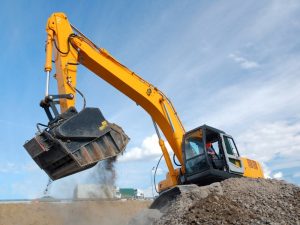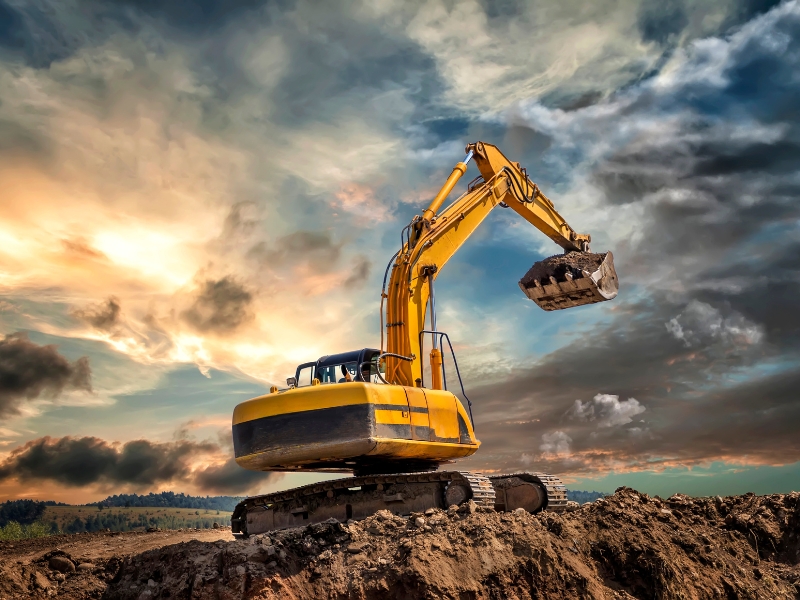Excavators are essential machines on construction sites, but they can face serious challenges when working on soft ground. If an excavator sinks, it can lead to delays, safety hazards, and costly damage. Understanding why this happens and how to prevent it is crucial for operators and site managers. This article explores the causes of soft ground conditions, how an excavator’s weight contributes to sinking, and the safety measures needed to prevent accidents. We’ll also discuss how proper training improves efficiency and reduces risks.
What causes soft ground conditions on construction sites?
Soft ground can pose a significant challenge for heavy machinery like excavators. Several factors contribute to unstable soil conditions, including:
- High moisture content – Excess water from rain, underground springs, or poor drainage weakens the soil structure.
- Loose or sandy soil – Sandy or loosely packed soil lacks the density to support heavy equipment.
- Clay-rich soil – Clay retains water and becomes soft, making it difficult to hold up heavy loads.
- Marshy or swampy areas – Natural wetlands have low soil strength and are prone to sinking.
- Recently disturbed soil – Areas that have been excavated or backfilled may not have settled properly, reducing stability.
Identifying these conditions before operating an excavator can help prevent issues on-site. Moreover, understanding soil mechanics is crucial. It helps operators assess ground stability and avoid problems like sinking when working with heavy machinery on soft ground.
How does excavator weight contribute to sinking?
The sheer weight of an excavator can be a major reason why it sinks into soft ground. Factors that contribute to this issue include:
- Overall machine weight – Larger excavators exert more pressure on the ground, increasing the risk of sinking.
- Uneven weight distribution – If an excavator is positioned incorrectly, one side may press harder into the ground.
- Tracks vs wheels – Tracked excavators distribute weight better than wheeled ones, reducing pressure on soft ground.
- Dynamic load shifts – Moving the boom or bucket changes the weight distribution, making the ground unstable.
- Added attachments – Additional tools and counterweights increase the machine’s total weight, making it harder for soft ground to support.
What are the risks of operating an excavator on soft ground?
Working with an excavator on unstable ground presents several dangers. Some of the most common risks include:

- Machine instability – If the excavator shifts or sinks unevenly, it can tip over.
- Reduced traction – Operators may struggle to manoeuvre the machine, leading to loss of control.
- Increased wear and tear – Sinking or excessive ground pressure can damage undercarriage components.
- Delays and inefficiency – A stuck excavator can halt work, requiring extra time and resources to free it.
- Safety hazards – A tipping excavator can injure operators and nearby workers.
Recognising these risks is the first step in ensuring safer excavation operations.
How can you prevent an excavator from sinking?
To keep an excavator stable on soft ground, operators and site managers can take several precautions:
- Use timber mats or ground protection – Placing mats or steel plates under the excavator spreads the weight over a larger area.
- Adjust bucket movements – Keeping the bucket low and using smooth movements reduces sudden weight shifts.
- Monitor ground conditions – Regularly check for water saturation and soil stability before operating.
- Use the right equipment – Tracked excavators are better suited for soft ground than wheeled models.
- Reduce weight where possible – Removing unnecessary attachments or counterweights decreases ground pressure.
Planning ahead and implementing these techniques can prevent sinking and improve job site efficiency.
What safety measures should operators take when working on soft ground?
Safety is the top priority when operating an excavator on soft ground. Operators should follow these best practices:
- Inspect the work area – Check for weak spots, underground utilities, or potential hazards.
- Use controlled movements – Avoid sudden stops, quick turns, or excessive digging force.
- Keep a safe distance from edges – Avoid working too close to trenches, slopes, or waterlogged areas.
- Communicate with the team – Maintain clear communication with spotters and other workers on-site.
- Have a recovery plan – Be prepared with equipment and procedures in case the excavator starts to sink.
Following these safety steps helps protect both operators and equipment. Additionally, to enhance safety and efficiency on the job site, it’s essential to learn how to use an excavator safely on soft ground with proper training and techniques.
How does proper training reduce excavation risks?
Proper training is essential for reducing the risks associated with excavation work. Training ensures that operators:
- Understand soil conditions – Recognising unstable ground prevents unnecessary risks.
- Know machine limits – Understanding how much weight an excavator can handle reduces strain on the ground.
- Improve handling skills – Trained operators use controlled movements that minimise sinking.
- Learn emergency procedures – Knowing how to respond if an excavator gets stuck prevents further damage.
- Stay updated on safety regulations – Compliance with safety standards reduces workplace accidents.

If you’re ready to take the next step in your construction career, learn more about the Excavator Ticket Course and start your career with the right skills and certification today. Certified training programs equip operators with the knowledge to handle soft ground safely.
What should you do if an excavator is sinking into soft ground?
If an excavator starts sinking, quick action can prevent a serious situation. Steps to take include:
- Stop all movements immediately – Sudden adjustments may worsen the sinking.
- Raise the boom and bucket – Lifting attachments help redistribute weight.
- Try reversing carefully – Backing up onto firmer ground can reduce further sinking.
- Use support mats or planks – Placing solid ground protection under the tracks can help stabilise the machine.
- Call for assistance if needed – If self-recovery is not possible, professional help may be required.
Having a recovery plan in place ensures a safer and faster response. Additionally, to further enhance operator safety, discover which safety features excavators should have to ensure a secure working environment on the job site.
How can safety training improve excavation efficiency?
Investing in safety training does more than prevent accidents—it also boosts productivity by:
- Reducing downtime – Trained operators are less likely to get stuck, keeping projects on schedule.
- Improving machine lifespan – Correct operation minimises wear and tear.
- Enhancing worksite coordination – Skilled operators work more efficiently with ground crews.
- Boosting confidence and morale – Well-trained workers feel more prepared and make better decisions.
- Lowering overall costs – Fewer accidents mean less money spent on repairs and delays.
Training provides long-term benefits for both individuals and businesses.
Get certified with SafeZone Training
Proper excavator training is essential for safe and efficient operation. SafeZone Training offers an Excavator Ticket Course designed to equip you with the skills needed to operate heavy machinery safely. Our courses meet Australian safety standards and provide hands-on training with expert instructors.
Many operators have trained with us and praised the experience—not just for the quality of instruction but also for the friendly staff, easy-to-follow lessons, and hassle-free booking process. Plus, we offer some of the best pricing in the industry. Our team is always ready to help, making sure you get the skills and confidence needed on the job.
Whether you’re starting a career in construction or upskilling your team, we provide the knowledge and certification required for safe and effective excavation. Reach out to SafeZone Training to discuss your training needs.
Frequently Asked Questions
- What types of excavators are best for soft ground?
Tracked excavators are better suited for soft ground. They distribute weight more evenly, reducing the risk of sinking.
- Can weather conditions affect excavator stability?
Yes, rain or high moisture levels can weaken the soil, making excavation more challenging and increasing the risk of sinking.
- How do excavator attachments impact sinking?
Additional attachments, such as large buckets or heavy tools, increase the machine’s overall weight, putting more pressure on the ground.
- How do I know if the ground is too soft for excavation?
Signs include muddy, waterlogged surfaces or loose soil. Always test the ground stability before operation.
- What should I do if my excavator starts sinking slowly?
Stop all operations, raise the boom, and carefully reverse or move to firmer ground to redistribute weight.
- Can excavators work in marshy or swampy areas?
It’s challenging but possible with proper ground support, like timber mats and the right equipment.
- How can I protect the excavator tracks from soft ground?
When working on soft surfaces, use ground mats or steel plates to distribute the weight and prevent damage to the tracks.
- Is it necessary to inspect the soil before every excavation?
Yes, regular inspection is critical, especially after heavy rain or in areas with variable soil conditions.
- Can excavator training help prevent sinking?
Proper training teaches operators how to recognise unstable soil and use equipment correctly, reducing the risk of sinking.
- What’s the best way to handle an excavator stuck in the ground?
Call for assistance, use recovery equipment, or try using mats to stabilise the machine and lift it out slowly.

